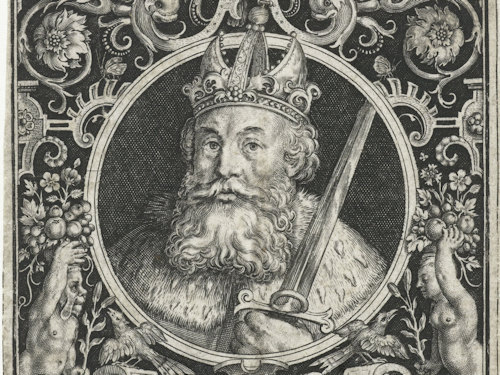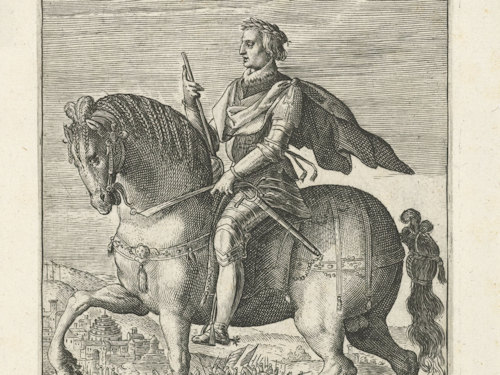
We know a Habsburg dynasty ruled a changing set of lands centered on Vienna, but this collection of states did not become a formal empire as such until 1804.
So how come nearly all those Habsburg rulers still got to call themselves Emperor before this date?
- Holy Roman Empire was made up of numerous independent states
- Common allegiance to an elected Emperor
- …usually the ruling Habsburg from the mid-1400s
- Book a tour* in the Habsburg capital
- See also:
- Previous: The Habsburg Monarchy
- Next: The Austrian Empire
Emperor by election
As it turns out, most of those rulers were also head of the Holy Roman Empire that persisted more or less from the late 900s to the early 1800s. You may have heard of the very first Holy Roman Emperor, Charlemagne:

(Portrait of Charlemagne in medallion form, Nicolaes de Bruyn, 1594. Image courtesy of the Rijksmuseum)
Much of Europe in those days wasn’t made up of a few large kingdoms; you also had myriads of duchies, principalities, free cities etc. etc.
The Holy Roman Empire brought together a collection of such entities across a large chunk of today’s central Europe (Germany, Austria, Switzerland and more).
Although essentially independent of each other, these entities all pledged common allegiance to a monarch elected by the most senior of his peers and formally anointed Holy Roman Emperor by the Pope.
If you think European politics is complicated now, imagine the squabbles, manoeuvering, manipulation, rule changes, bribery, territorial changes and conflicts that the Holy Roman Empire experienced over 800+ years. Let’s not even go there.
So where do our Habsburgs fit in?

(The first Habsburg Holy Roman Emperor, Frederick III, on horseback. By Crispijn van de Passe (I), 1604. Image courtesy of the Rijksmuseum)
Many (but not all) Habsburg lands were also part of the Holy Roman Empire and many (but not all) territories within the Holy Roman Empire were run by the Habsburgs.
This situation put the head Habsburg in a pretty strong position when it came to electing a Holy Roman Emperor.
The first Habsburg monarch to become the actual, confirmed Holy Roman Emperor was Frederick III in 1452.
Although the position was democratically elected (albeit by just a handful of people), the title stayed in Habsburg hands all the way through to the end of the Holy Roman Empire in 1806, bar a short period in the 1740s.

(The Schatzkammer imperial treasury in Vienna is home to the centuries-old Imperial Crown of the Holy Roman Empire. An interdisciplinary project at the Kunsthistorisches Museum has been conducting detailed research on its composition, history etc., which you can read about here. The press photo above shows the setup for taking images with the 3D-digital microscope and is © KHM-Museumsverband)
So this is why all those Habsburgs got to call themselves Emperor.
What about Empresses, though?
Unfortunately, only men were eligible to be Holy Roman Emperor.
When Maria Theresa (1717-1780) ruled the Habsburg lands, for example, she was Archduchess of Austria, Queen of Hungary and not Empress of anything. Instead, it was her husband, Franz Stephan, and then her son, Joseph II, who carried the title Holy Roman Emperor.

(A crowned Maria Theresa on a horse, as engraved by Franz Leopold Schmittner around 1741; Wien Museum Inv.-Nr. 169850/2; excerpt reproduced with permission under the terms of the CC0 licence)
So while you’ll see Maria Theresa described as an empress (here at Visiting Vienna, too), it’s technically only in the sense of “the Emperor’s wife”. Which seems a little unfair, given she was the actual Habsburg ruler…and an important one at that.
The eventual dissolution of the Holy Roman Empire in 1806 might have dampened the spirits of a dynasty used to describing themselves as imperial.
Fortunately for the self-confidence (and vanity) of those Habsburg monarchs, they still got to call themselves Emperor because of something relatively new: the Austrian Empire.